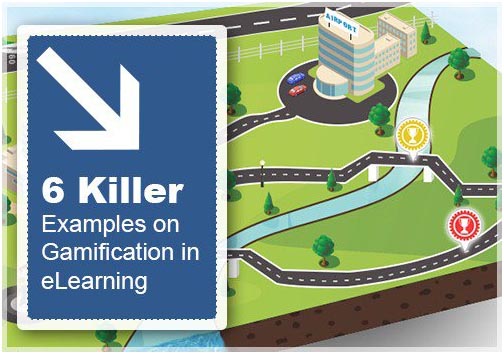
The significance of understanding and integrating learner needs into corporate training programs is well established. In this article, I share a 3-part process you can use to capture, process, and integrate learner needs into your training programs.
What are Learner Needs?
Understanding learner needs is essential for creating effective and engaging training programs. Learner needs encompass the specific requirements and expectations that individuals have for a learning experience. These needs can vary widely depending on various factors like age, professional background, learning style, and personal interests.
Here’s a concise overview of what constitutes learner needs:
- Learning Objectives and Goals: Understanding what learners aim to achieve through training.
- Background Knowledge and Skills: Assessing the existing knowledge and skill level of learners to tailor the training accordingly.
- Learning Styles and Preferences: Recognizing different learning styles (visual, auditory, kinesthetic) and preferences (self-paced learning, group activities).
- Motivational Factors: Identifying what motivates learners, such as career advancement, skill development, or personal interest.
- Accessibility and Inclusivity: Ensuring the training is accessible to all learners, regardless of physical or learning disabilities.
- Feedback and Adaptability: Incorporating mechanisms for regular feedback and the ability to adapt the training based on learner responses.
By recognizing and addressing these aspects, training programs can be more effectively designed to meet the diverse needs of learners.
Why Is It Important to Understand Learner Needs in Your Training Programs?
Understanding learner needs is crucial in today’s dynamic work environment, characterized by remote work, a highly mobile workforce, and increased interaction beyond traditional workplaces. This changing landscape necessitates a shift in organizational eLearning strategies to ensure they remain effective and relevant.
Key points highlighting the importance of understanding learner needs include:
- Adapting to the Modern Work Environment: With the rise of remote and flexible work arrangements, traditional one-size-fits-all training approaches are no longer sufficient.
- Enhancing Effectiveness of Training Programs: A Brandon Hall Group study revealed that less than 25% of organizational Learning & Development (L&D) strategies effectively meet business goals. A significant factor in this is the lack of alignment between training programs and the actual needs of learners.
- Focusing Beyond Mere Learning Outcomes: Many organizations prioritize learning as the primary goal, often overlooking the integration of learner-specific needs. This approach can lead to ineffective training, especially in remote learning scenarios where learner engagement and adaptability are critical.
By focusing on these aspects, organizations can develop more targeted, effective training programs that not only impart knowledge but also address the diverse needs and preferences of their learners.
What Are the Benefits of Integrating Learner Needs into Your Training Program?
The integration of learner needs into training programs goes beyond achieving mere completion rates; it leads to more effective and impactful training, with multiple benefits for both the organization and its employees.
Here are the key benefits of aligning training programs with learner needs:
-
Enhanced Training Effectiveness:
Tailored training that considers learner needs results in more effective learning outcomes. This approach ensures that the training is relevant and engaging, leading to better knowledge retention and application.
-
Increased Employee Retention:
According to IBM research, organizations providing training aligned with employee needs see a 62% retention rate. This is significant in maintaining a stable and experienced workforce.
-
Financial Benefits:
- Reduced Replacement Costs: Organizations can substantially reduce costs associated with employee turnover. Training that aligns with learner needs is likely to increase job satisfaction, thereby reducing the need for frequent replacements.
- Cost Savings: The savings on replacement costs can exceed 200% of an employee’s annual salary, showcasing the financial viability of investing in learner-centric training.
-
Meeting Organizational Objectives:
Training that focuses on learner needs is more likely to align with and support the broader business and financial objectives of the organization.
By focusing on these aspects, organizations can create training programs that are not only educational but also strategically beneficial in terms of employee engagement, retention, and financial efficiency.
What are the Different Types of Learner Needs
Learner needs can be diverse and multifaceted, varying significantly among individuals. These needs can generally be categorized into several types:
-
Cognitive Needs:
Relate to how learners process information and include preferences for specific types of cognitive challenges and intellectual stimulation.
-
Emotional and Psychological Needs:
These needs focus on the emotional well-being of learners, such as the need for a supportive learning environment, stress management, and motivation.
-
Physical Needs:
Considerations for physical comfort and accessibility, including ergonomic aspects of the learning environment and accessibility for learners with disabilities.
-
Social Needs:
These needs pertain to the social aspects of learning, like opportunities for collaboration, group learning, and interaction with peers and instructors.
-
Practical Needs:
Relate to the applicability of training to real-world scenarios and the practical skills learners aim to acquire.
Each of these categories plays a crucial role in shaping a comprehensive and effective learning experience. Tailoring training programs to address these diverse needs ensures that learners are engaged, motivated, and able to apply their new knowledge and skills effectively.
How Are Training Effectiveness and Learner Preferences Linked?
Training programs not based on learner needs lack effectiveness as they fail to address what the learner requires the most. However, one aspect of delivering effective training, which is often overlooked, is the focus on learner preferences.
Each learner is different, and each learns and assimilates learning content uniquely. Keeping learner needs and preferences in mind, therefore, allows L&D managers to leverage not only learners’ past knowledge and experience but also how they prefer to learn – smartphones/tablets/laptops/desktops, visual, mobile learning, podcasts, social learning, web forums, gaming, on-demand content, video/audio, and so on – to offer the most effective training.
A 3-part Process for Capturing, Processing, And Integrating Learner Needs Into Your Training Programs
Part 1: Understand and Capture Learner Needs and Preferences
As each organization and learner population is unique, there is no one-size-fits-all approach to understanding and capturing learner needs and preferences. However, here are some guidelines to help you get started on that path:
Training Needs Analysis (TNA) and Learner Needs Analysis (LNA): There is a difference between TNA and LNA that sometimes gets lost when building training based around learner needs.
TNA views learning needs at an organizational level, while LNA looks at the challenge from a learner’s perspective. It is vital to conduct both types of needs analysis to better understand and integrate learner needs into your training programs. For both TNA and LNA, it is essential that you not only focus on current training needs but also factor in future organizational and personal learning needs.
Conduct a TNA first by assessing what skill shortages exist across the organization, meeting business objectives, and identifying the training required to develop such skills in-house.
Through individual and group interactions with learners, you then identify the knowledge gaps and skills needed by each employee and develop personalized needs-based training profiles to address those needs. You can do justice to LNA through:
- Surveys: Surveying learners to understand their learning styles, preferred learning approaches, and their learning motivations and experiences is a great way to understand and tailor training programs to unique learner needs.
- Focus group: Having a focused group vision helps understand and capture learner needs at a broader level. Have the focus group, comprising a representative sample of learners from across the organization, list their learning needs and preferences. Operational, HR, and L&D leaders can then rationalize, refine, and synthesize a list of focused needs and preferences to be used in developing their training strategy.
- Interviews: Interview learners, individually and collectively, to determine what their professional goals and career progression aspirations are, and skill sets they’d like to acquire or develop to help them realize those objectives.
- Audience analysis: Conducting an audience analysis prior to putting an eLearning strategy or program together helps develop better learner needs-focused training. Understanding who needs training (your audience), why they feel they need it, and what training they need helps create and deliver more effective and meaningful training.
- Factor for the training type: Learner needs vary based on the type of training required. Some needs may easily be met through eLearning courses, such as compliance training, sales training, or leadership training, etc. Others, such as those involving the use of specialized equipment or tools or a training environment that can’t be mimicked virtually, may need a blend of virtual and in-person training. To better integrate learner needs into your training programs, it is essential, therefore, to understand the types of training needed and what constraints they entail.
Part 2: Process the Collected Data
After understanding and capturing valuable data about your learners’ needs and preferences, it’s time to process and analyze the collected information so you can make data-driven decisions about integrating learner needs into your training program.
Here are a few strategies that will help you achieve this:
- Creating learner personas: Learner personas, also called learner prototypes, are unique groups of learners that share similar learning aspirations, professional goals, and learning needs. Use the data collected to segment learners across the organization into a few (not too many!) distinct groups, and then design your eLearning strategy to exclusively target each of those groups.
- Identifying ways to motivate learners: Two types of factors motivate learners – intrinsic and extrinsic. Some employees like to learn so they can do new things or excel at what they already do (intrinsic motivators). Others need to learn so they may advance their careers or get a promotion or a raise (extrinsic motivators). With data gathered through interviews and surveys, you can identify what motivates each employee, so you can better tailor your eLearning to address those factors.
- Identifying ways to connect learners with learning programs (creating awareness/ establishing WIIFM):Organizations may offer a plethora of learning to its employees, but it’s not always clear (to learners) which courses are the most appropriate or why they should enroll. Through data gathered, you can help link employee learning needs to their intrinsic and extrinsic motivators. Do this by making them aware of learning opportunities and helping them understand how learning objectives coincide with their own career or L&D objectives. Learner needs-based training becomes more effective once learners appreciate how they benefit from it – What’s in it for me (WIIFM)?
- Mapping training delivery strategies to personas: Learning personas (or learning profiles) aren’t homogenous across the organization. Use the data you’ve collected on learning styles, preferences, and prior learning experiences to create training delivery strategies targeting each persona. For instance, some learners may be tech savvy and will benefit from self-directed learning. Others may be tech-shy for whom an Instructor-Led/Virtual Instructor-Led (ILT/VILT) training strategy might work better.
- Mapping learning strategies to personas: We’ve seen earlier that not every learner is the same and that learning personas aren’t homogenous. It’s important to, therefore, use the learner needs data assembled to map learning strategies to unique learning personas. Some learners may prefer scenario-based learning, while others learn better through story-based content. There’ll be personas that respond better to mobile learning and microlearning strategies, while others need gamification to learn effectively.
Part 3: Integrate Learner Needs into Your Training Program
Now, leverage your data analysis to seamlessly integrate learner needs into your training programs.
- Factor for both the learner experience and learning experience: Effective learning must account for a learner’s prior knowledge and experiences. But learning effectiveness also relies on what a learner wants to get out of training and how instructional designers address those wants through positive learning experiences. A blended combination of both experiences helps better integrate learner needs into L&D programs.
- Design the learning journey: Use your assessment of the data to focus not on single training events – a webinar, course, or module, but on a career-long learning journey for each employee. Develop personalized learning paths and support each learner’s journey through a blend of formal and informal learning events.
- Leverage the learning and performance ecosystem: There’s a vast performance ecosystem to help L&D teams integrate learner needs into highly effective training programs. These include drawing learner attention to learning opportunities, helping them understand what’s in it for them, and using an array of immersive learning approaches, including virtual/augmented reality, social learning, gamification, and scenario/branching scenario-based learning.
Learners must be supported through Performance Support Tools (PSTs) that deliver on-demand and in-the-flow of work learning, while also reinforcing skills through practice and feedback.



